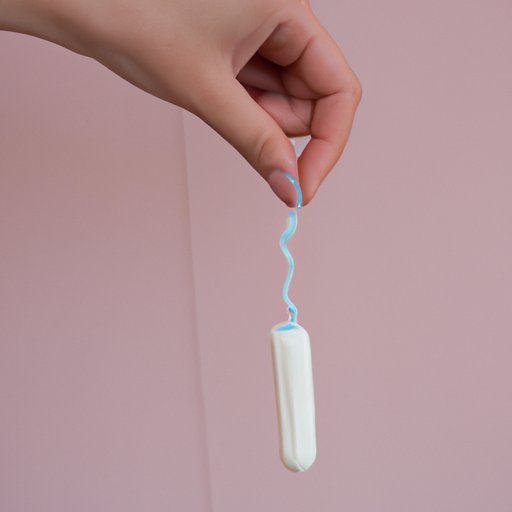

Introduction: Understanding the Tampon Debate
Menstrual health is an important topic, but it’s not always easy to understand. Tampon wear, in particular, is a subject that has sparked countless debates and discussions, and there are often conflicting views and advice. However, understanding how long to wear a tampon for is an integral part of taking care of your menstrual health and minimizing any risks.
The Health Risks of Wearing a Tampon for Too Long
One of the main concerns when it comes to tampon wear is the risk of leaving it in for too long. This can lead to toxic shock syndrome (TSS), a rare but potentially life-threatening condition characterized by fever, rash, low blood pressure, and organ failure. It’s important to note that TSS is not exclusive to tampon wear, but it’s often associated with it.
Additionally, leaving a tampon in for too long can also increase the risk of bacterial growth, which can cause vaginal infections such as bacterial vaginosis and yeast infections.
To avoid health risks associated with tampon wear, it’s crucial to prioritize your own well-being. Don’t hesitate to seek medical attention if you feel unwell or experience any unusual symptoms.
Tips for Maximizing Comfort and Safety with Tampon Wear
While tampons have their risks, they can also be a safe and comfortable option if used properly. Here are some tips to make the most of your tampon routine:
- Choose the right absorbency: Using tampons that match your flow is essential. On lighter days, consider using a lighter absorbency to avoid unnecessary discomfort.
- Don’t leave it in for too long: It’s generally recommended to change your tampon every 4-8 hours. Set reminders or alarms to keep track of time, especially if you have a busy schedule.
- Wash your hands: Always make sure to wash your hands before and after inserting and removing a tampon to prevent the spread of germs.
Fact-Checking Tampon Myths and Misconceptions
There are many myths and misconceptions surrounding tampon use that can contribute to feelings of fear or doubt. Here are some common myths and their accurate responses:
- Myth: Tampons can get lost inside the body.
- Fact: Tampons are designed to stay in place and can’t get lost inside the body. Remember to change your tampon every 4-8 hours to avoid the buildup of bacteria.
- Myth: Tampons can cause virginity loss.
- Fact: Tampon use does not affect virginity.
It’s important to seek reliable sources of information when it comes to tampon care.
The Risks and Prevention of Toxic Shock Syndrome
TSS is a serious condition that can develop when certain types of bacteria (Staphylococcus aureus or Group A Streptococcus) release toxins in the bloodstream. While rare, it’s important to be aware of the symptoms and take precautions to reduce your risk. Here are some tips for TSS prevention:
- Alternate tampon use with pads or other menstrual products.
- Choose organic, unscented tampons to reduce the risk of irritation or bacterial growth.
- Change your tampon regularly to avoid bacteria buildup.
If you experience any symptoms of TSS, such as fever, vomiting, or rash, seek medical attention immediately.
How to Have Honest Conversations About Tampon Wear
Talking about menstrual health can still feel taboo for many, but it’s important to break down these barriers in order to take better care of ourselves. Here are some tips on how to talk openly about tampon wear:
- Start the conversation with friends or family members who you trust and feel comfortable with.
- Practice open communication with your healthcare providers. Ask questions or raise any concerns you might have.
- Share personal stories or experiences to help normalize the conversation around menstrual health.
Conclusion: Finding the Best Tampon Routine for You
Tampon wear is a personal decision that should prioritize health and comfort. Knowing how long to keep a tampon in and understanding the risks associated with it is a crucial part of taking care of your menstrual health. By following the tips presented in this article, you can make informed decisions about your tampon routine and find the best routine that works for you.




